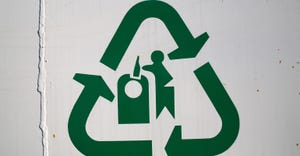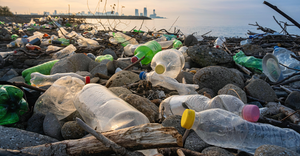In the anaerobic underlayers of a mixed solid waste landfill, subsurface chemical reactions are common and expected.
These reactions, facilitated by microbes that break down the waste, produce gas that can be used to create bioenergy. Collection systems, usually consisting of plastic piping through the landfill, collect the gases. While gas temperatures of 80 to 100 degrees Fahrenheit are typical, Bryan Staley, president of the North Carolina-based Environmental Research and Education Foundation (EREF), notes that temperatures in excess of 160 degrees suggest the potential for an abnormal situation. Temperatures can even get high enough, Staley says, that plastic gas collection pipes begin to melt, and the normal microbial process at work in the landfill could be disrupted.
Extreme subsurface temperatures can be caused by exothermic reactions created by interaction among landfill materials, such as secondary aluminum waste, which reacts with water and can release substantial heat. But Staley says there are other reactions that the industry knows little about.
Related
The Arrival of the Waste Industry Data Age
Advancing Sustainability Analysis
“Elevated temperatures have also been observed with no known reactive material present,” Staley says. “That is a situation that is fairly new to the industry.”
Best management practices have been developed to deal with these atypical conditions, such as using metal piping rather than plastic in collection systems, he says.
But the industry still needs more information about these reactions so that more comprehensive mitigating strategies can be developed to prevent them.
A contributing factor may be the size and depth of today’s landfills, Staley says. Larger landfills that are over 100 feet deep can increase pressure on waste and the time it takes for liquid to move through the subsurface area, he explains. To further understand what is happening, EREF has given a grant in excess of $1 million to a multi-disciplinary research team consisting of several universities and research institutions. The goal is to develop a better understanding of the root causes of unknown subsurface reactions so that better risk management and mitigation techniques can be developed.
“We’re attempting to understand the extent of the phenomena and characterize it in term of microbial versus chemical characteristics,” Staley says.
Staley will discuss the microbiology basics of landfills, and what happens to the microbial ecosystem when elevated temperatures occur as part of a session entitled “Subsurface Reactions” from 10:15 to 11:45 a.m. on June 3 at WasteExpo 2015 in Las Vegas. Staley will be joined by Bob Dick of California-based SCS Field Services, who will discuss operational considerations and strategies used to manage elevated temperatures from subsurface reactions.
About the Author(s)
You May Also Like


